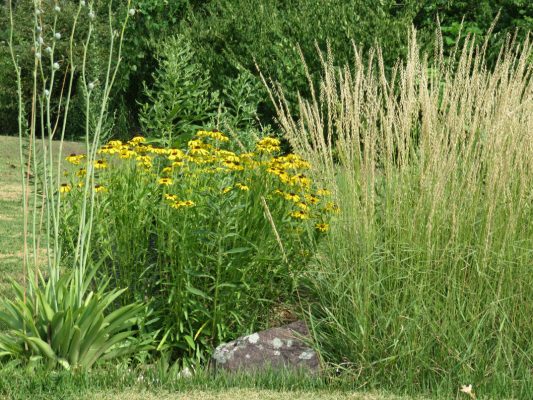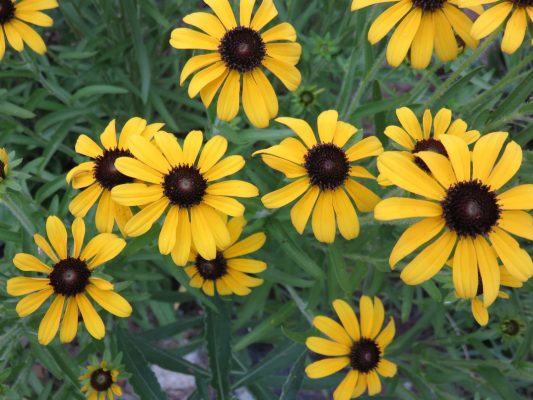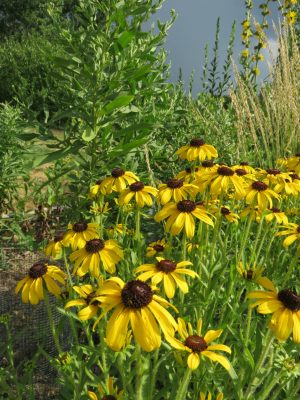Blog and photos by Penny Holtzmann
Board Member and Treasurer, Wild Ones – St. Louis Chapter
Plant name:
Missouri coneflower (Rudbeckia missouriensis)
Description:
This perennial occurs on limestone glades in the Ozarks and tolerates all the heat and drought that our Midwest summers can throw at them.
Missouri coneflower only grows about two feet tall and looks formal enough to put in your front yard. Its profusion of bright yellow flowers are most welcome in late summer.
This plant provides good cut flowers to bring indoors.
Visitors:
Various bees, butterflies, and other pollinators are attracted to these flowers for the nectar and pollen.
Rudbeckia species are host plants for the caterpillars of the silvery checkerspot butterfly and several moths.
Rabbits are a problem in my yard, but they apparently don’t like the hairy leaves of Missouri coneflower.
Environment:
This plant prefers full sun, dry-mesic conditions, and a thin rocky soil; but it does fine in clay soil on my hill. Look for it if you visit a dolomite glade in the Ozarks, such as Valley View Glades Natural Area in Jefferson County.
References:
Missouri Botanical Garden
Illinois Wildflowers
Where to purchase:
Missouri Wildflowers Nursery
Often, Missouri coneflower can be found at:
- The plant sales at Shaw Nature Reserve (SNR)
- Local garden centers that offer native wildflowers such as Greenscape Gardens

Missouri coneflower (Rudbeckia missouriensis) with false aloe (Manfreda virginica) on the left and sideoats grama (Bouteloua curtipendula) on the right
Upcoming Plant Sale:
“Shop for locally produced native plants, food and crafts. Also, experts will answer your native gardening questions.”
Event: Wildflower Market at SNR
Date: Friday, September 8, 2017
Time: 4:00 -7:30 p.m.
Location: Whitmire Wildflower Garden
Cost:
Free for Missouri Botanical Garden and SNR members
$5.00 for adults
$3 for seniors (65+)
Bring checks and cash to pay vendors. One vendor, Missouri Wildflowers Nursery, will accept credit cards. Cash or check accepted by all vendors.




Thanks Penny, good report.
I was at SNR Friday and there are hundreds of these growing along the Trace trail which crosses thru a glade. They are also growing down the hill out from the boardwalk overlook. They are beautiful now.
Penny or Kathy or anybody, Is there a relatively easy way to tell the difference between this plant and the brown-eyed Susans (Rudbeckia triloba) we saw at the last Gathering in Kevin King’s yard? – Marcia
The most obvious difference is the height. R. triloba can grow to 5 feet; R. missouriensis will be less than 2 feet. The leaves on R. missouriensis are shaped more linear and do not spread far from the stem.